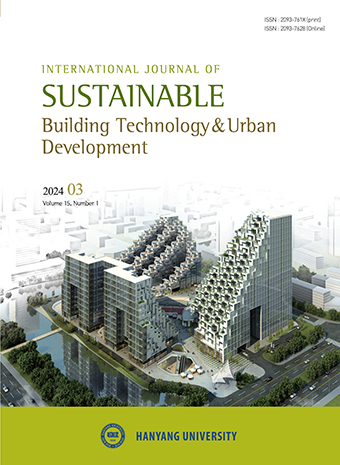General Article
Abstract
References
Information
- Publisher :Sustainable Building Research Center (ERC) Innovative Durable Building and Infrastructure Research Center
- Publisher(Ko) :건설구조물 내구성혁신 연구센터
- Journal Title :International Journal of Sustainable Building Technology and Urban Development
- Volume : 11
- No :1
- Pages :16-28
- Received Date : 2019-07-26
- Accepted Date : 2020-03-21
- DOI :https://doi.org/10.22712/susb.20200003




 International Journal of Sustainable Building Technology and Urban Development
International Journal of Sustainable Building Technology and Urban Development









